Przewalski's Horse, also known as the P-Horse or Takhi, is one of the world's oldest equine breeds. This Mongolian wild Horse was still alive 100,000 years ago, coming close to extinction in the 20th century. These animals recently earned the unfortunate classification of "extinct in the wild."
However, wildlife conservation efforts may bring this steed back to its former glory. As the last wild horse species, the Przewalski's Horse offers us a fascinating look at the world's ancient animals. We've gathered all the information you need to know about this intriguing horse breed.
Przewalski's Horse Characteristics
Przewalski's (pronounced shuh-VAL-skee) Horse is stocky, with a thick neck, large head, and stout legs. The Przewalski's Horse resembles a zebra in its shape and pattern with its faint leg-stripes.
Some of the wild P-Horse's unique characteristics result from their 66 chromosomes (domestic horses only have 64). However, Przewalski's Horses interbreed with the domestic Horse and produce healthy foals with 65 chromosomes.
Their hooves are longer on the front of their foot than the rear, increasing their ability to withstand Mongolian terrain. More so, this breed has a dorsal stripe that runs along its back. The Przewalski's tail is dark and plumed.

Przewalski's Horse Size
This breed generally stands 4.5-5 feet tall and weighs between 600-700 pounds. These wild animals may be stocky when compared to modern domestic horses. Though, Przewalski's Horses are closer in height to the ancient equine breeds that first roamed the world.
Though the Przewalski's Horse has a pony-like size, it is not advisable for beginning equestrians. These wild steeds are quicker to buck or kick than a domesticated horse. Conservationist experts should only handle P-Horses.
Przewalski's Horse Personality
Przewalski's Horse is truly wild. At times, it may have a fiery and almost feral temperament, but we should expect nothing less from this free spirit. The word for this Horse in Mongolia, Takhi, means "spirit."
This species is used to running free in its natural habitat. Even soldiers in ancient Mongolia considered these horses companions rather than pets. While a domestic horse has been artificially selected for its stamina or calmness, Przewalski's Horses are survivors that prevailed through natural selection.
Przewalski's Horse History
The first written observation of P-Horses dates back to the year 900 AD. These horses' history goes even further, and experts believe the first Przewalski's in the world lived 160,000 years ago.
Wild Przewalski's Horses are not ancestors of the modern, domestic Horse. There was a split between the lineage of P-Horses and the domesticated horses around all those years ago. Thus, the exact time of this divergence is also under debate.
The first Przewalski Horses lived throughout Europe and Asia. By the time Russian explorer Nikołaj Przewalski described the steeds, the only wild populations were found in the Gobi Desert. However, some theorize that the Gobi Desert is not this Horse's natural habitat.
Of course, Mongolian people were familiar with this animal long before a Russian explorer described it. Przewalski's Horses mated with the horses of Mongolia, creating the Mongolian breed that's still around today.
As the demand for domesticated equines grew, the wild horse population declined. The species took a critical blow when German soldiers killed a valuable P-Horse population in Ukraine during World War II. By the end of the 1950s, only 12 of Przewalski's Horses remained. Fortunately, modern wildlife conservation programs have succeeded in bringing this endangered animal back to Mongolia.
The P-Horse is a controversial animal in the equestrian community. There is still a discussion over how we should taxonomically classify these equines. Some believe Przewalski's is a horse species, and that should therefore classify them as Equus przewalskii. Others believe Przewalski's Horses are a subspecies of wild horses (Equus ferus przewalskii). This breed might also be a feral variety of domestic horses, and some claim they should be classified as Equus ferus caballus.

How to Care for a Przewalski's Punch Horse
These endangered equines require food and exercise, just like domesticated horses. Przewalski's Horses are accustomed to the harsh winters of their natural habitat. This adaptation resulted in horses that are professionals when it comes to foraging for their food.
Don't keep a Przewalski's steed in a stall like domesticated horses. Since this is a threatened species, only keep them by a national zoo or conservation initiative. Unfortunately, the average equestrian cannot provide the genetic testing, and artificial insemination P-Horses need.
Przewalski's Horses shouldn't stay solitary because they grow naturally in social herds. These equines form family groups and bachelor groups. Families consist of the dominant stallion, his mares, and their offspring.
Bachelor groups include Przewalski Horses that never mated. A former dominant stallion that reaches an old age may also leave their family to join a bachelor group. Foals stay in their family groups until they are three years old, leaving when they become independent.
Przewalski's Horse Training
The best way to train a Przewalski's Horse's instincts is by allowing them to live as they would in the wild. This is why so many P-Horses are sent to reintroduction sites in Mongolia or other wildlife reserves. The goal is to preserve this endangered species while ensuring they remain wild horses.
Nutrition and Feeding for a Przewalski's Punch Horse
The average Horse requires 1-2% of their body weight in roughage every day. Przewalski's Horses roam their environment, eating grass, plants, fruits, tree bark, and leaves. Those being looked after by a national zoo are often fed hay, grain, and alfalfa.
Coat Color And Grooming
Przewalski's Horses have a coat that is typically dun, though it can come in various shades. It usually bears a yellowish-white color around the underside and face. The legs are typically striped, though these markings become extremely faint or not visible at all to the naked eye.
This wild species is one of the hardest to get your hands on. However, modern conservation practices might raise this Horse's population in the upcoming years. Who knows, maybe someday we'll even see Przewalski's Horses in the show ring!
If you're ever lucky enough to groom a Przewalski's Horse, make sure the animal is relatively domesticated. The concept of grooming will be foreign to a wild horse. Here's a quick rundown if you're feeling a bit lost too.
- Hose the P-Horse down after a hard day of work. This reduces the number of flies that are attracted to the animal's sweat.
- Check their hooves for rocks, dirt, and other debris that may have gotten stuck in their feet.
- Grab some equine shampoo and a rubber scrubbing mitt to scrub their bodies (up to the neck) clean. Use a washcloth or facial brush past the neck.
While you're scrubbing, search for bumps, rashes, or other abnormalities on their bodies. Irregularities such as these, whether small or large, can indicate infection or other issues. If you see anything out of the ordinary, contact a veterinarian or conservation initiative.
Przewalski's Horse Health Problems
Since this is a feral breed, it is incredibly resilient. Przewalski's Horses are endangered, but their dwindling numbers are not due to disease or illness. These hardy steeds are not susceptible to many health problems, but all horses have the occasional sick day.
Many of the conditions that could potentially affect the P-Horse are caused by viruses and bacteria. These illnesses are most critical at the breeding stage. Since the Przewalski's Horses of today are being reintroduced into the wild, diseases that affect breeding are of particular concern.
Piroplasmosis
Piroplasmosis is a blood-borne infection spread by ticks. This disease is caused by the parasites Theileria equi and Babesia caballi. At least 14 tick species can carry this infection. They often live on improperly sterilized surgical, dental, or tattoo equipment.
The symptoms of piroplasmosis include fever, lack of appetite, anemia, jaundice, and weight loss. The best way to prevent this condition is to throw away needles after use. Also, practice good sterilization techniques for reusable equipment.
In Asia, piroplasmosis is a common equine condition. So, many P-Horses have strong antibodies for fighting the parasites T. equi and B. caballi. However, piroplasmosis is a foreign disease in the U.S., and treatment requires quarantining the Horse.
Equine Infectious Anemia Virus
Also known as swamp fever, the equine infectious anemia virus (EIAV) is a retrovirus, which causes horses to be critically susceptible to other illnesses. Retroviruses change the DNA of the organism they infect, causing the host's body to produce more of the virus and ultimately weaken.
Symptoms of EIAV include a high fever, anemia, swelling, and extreme tiredness. Some horses with EIAV are asymptomatic, but a test can determine whether they have the virus. Testing is crucial because horses with EIAV can pass the condition on to their offspring.
Similar to piroplasmosis, this virus spreads through unclean surgical, dental, or tattoo equipment. Sterilization is the best prevention method. If a P-Horse does develop EIAV, there is luckily a cure – the Chinese Live Attenuated EIA vaccine.
Equine Viral Arteritis
Equine viral arteritis (EVA) is an acute, contagious viral disease. It can cause fever, depression, anorexia, conjunctivitis, nasal discharge, rashes, and death in foals. This disease is primarily a concern for breeders and those attempting to reintroduce Przewalski's Horses to the wild.
This is a tricky disease to diagnose because the symptoms are similar to many other equine illnesses. Currently, there is no cure for EVA, though a vaccine is available. Horses will usually develop antibodies for EVA on their own if exposed to the virus.
The best prevention method for EVA is blood tests on breeding mares. These tests can determine whether horses have EVA antibodies. If horses have low or no antibodies, vaccinate them before breeding to minimize the foal contracting EAV risk.
Vesicular Stomatitis
Vesicular stomatitis (VS) is a contagious disease that results in lesions in a horse's mouth. These blistering wounds generally appear on the tongue, lips, and nose. Just like equine infectious anemia and equine arteritis, this condition comes from exposure to a virus.
Apart from lesions, signs of vesicular stomatitis include fever, foaming at the mouth, drooling, and a reduced appetite. Quarantine, soft foods, and anti-inflammatory medication are the best treatment methods for affected horses. Prevent VS by regularly disinfecting your Horse's environment.
Glanders
Glanders results from the bacteria Burkholderia mallei. This bacteria enters the Horse's system through food and water. The best way to prevent glanders is by regularly refreshing the Horse's water and food supply.
Swollen eyelids are a notable symptom of glanders. Other signs include respiratory issues and fever. The mullein test can determine whether horses have glanders.
The best way to prevent glanders is through regular disinfection of your Horse's food troughs and other surfaces they frequently come into contact with.
Contagious Equine Metritis
Contagious equine metritis (CEM) is a venereal disease from the bacteria Taylorella equigenitalis. Stallions can carry CEM, but only mares will show signs. The symptoms of CEM are uterine inflammation that results in a thick discharge.
CEM is detectable through bacterial culture, blood testing, and test breeding. Metritis disease is treatable with disinfectant scrubs and antimicrobials. Prevention involves sterilization and disinfection of the Horse's areas.

How to Get a Przewalski's Horse
Przewalski's Horses aren't for sale. These wild animals have been classified as "extinct in the wild" and "critically endangered." Sadly, they will not be listed on a site like EquineNow anytime soon.
However, the P-Horse has gone from "critically endangered" to "endangered" in 2011, so maybe we'll see these wild horses become more common in the next few years. For now, you'll have to utilize Przewalski's conservation efforts and captive breeding programs if you want to meet one.
The Smithsonian National Zoo & Conservation Biology Institute and the Prague Zoo are some of the most notable conservation initiatives. Along with many others, these breeding programs aim to steadily reintroduce P-Horses into their original Mongolian habitat.
Meanwhile, captive breeding efforts seek to rebuild this breed's population through controlled procreation. The largest group of captive Przewalski's are in Askaniya-Nova, a biosphere reserve in Ukraine. All of these initiatives are working together to protect this ancient horse species.
More About This Horse Breed
We may not have decided whether we should call this Horse Equus ferus przewalskii or Equus ferus caballus. Though one thing is certain: this species represents some of the most enduring horses in the world. The P-Horses alive today likely resemble the first Przewalski's that existed in Mongolia.
Advances in genetic testing, artificial insemination, and even cloning have revitalized this species. With the hard work of zoologists and plenty of time, P-Horses will again be the masters of the wild. Perhaps someday we'll see domesticated Przewalski's Horses that are nowhere near extinction, frolicking through a national park!

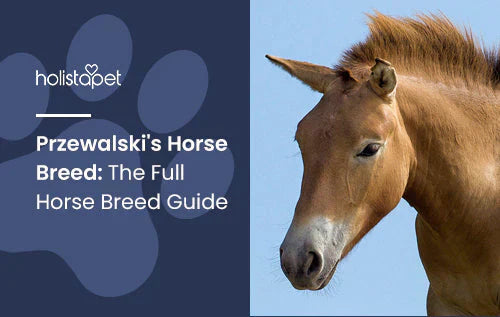
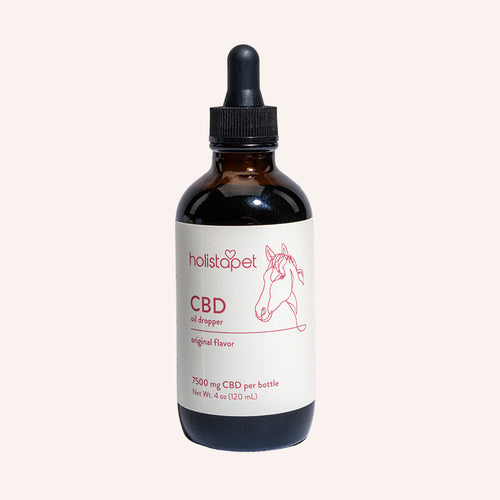 CBD Oil for Horses - Fast Acting
CBD Oil for Horses - Fast Acting
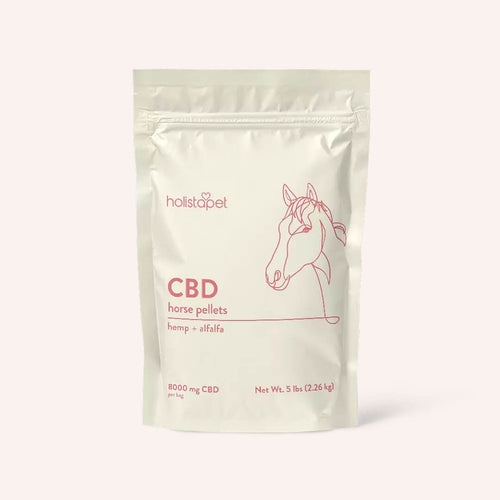 CBD Pellets for Horses - Easy Dose
CBD Pellets for Horses - Easy Dose
 "Ridin' On My Horse" Bundle - Highly Rated
"Ridin' On My Horse" Bundle - Highly Rated


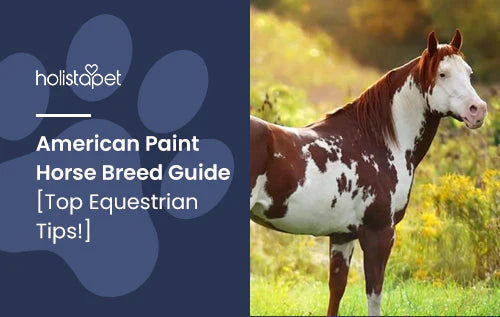
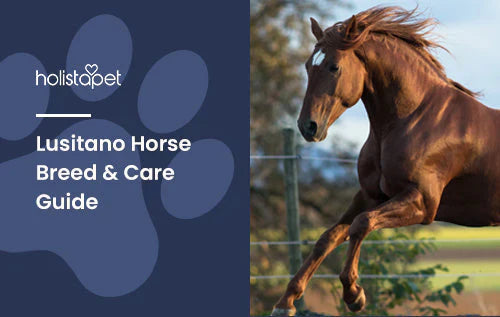

Leave a comment
All comments are moderated before being published.
This site is protected by hCaptcha and the hCaptcha Privacy Policy and Terms of Service apply.